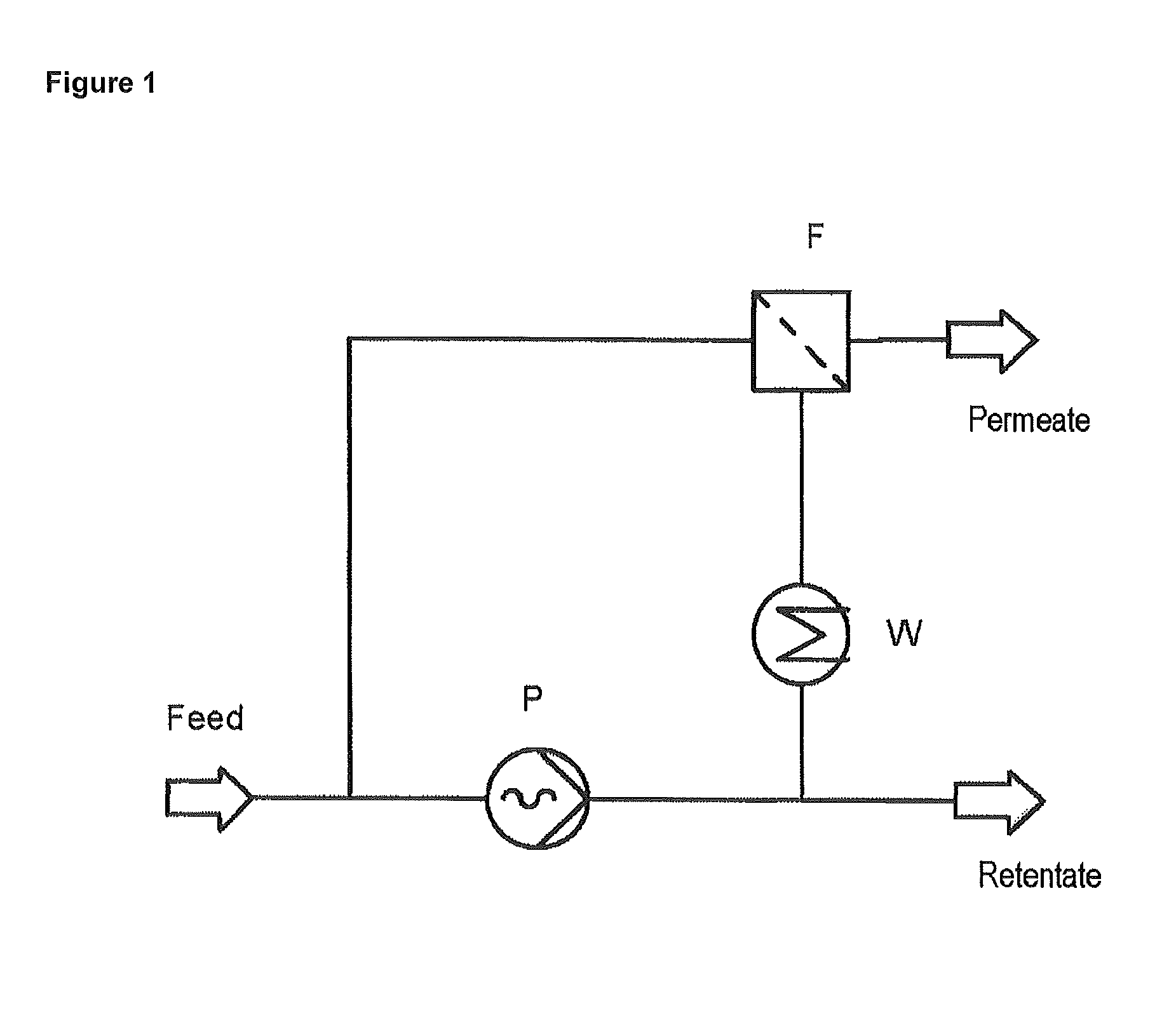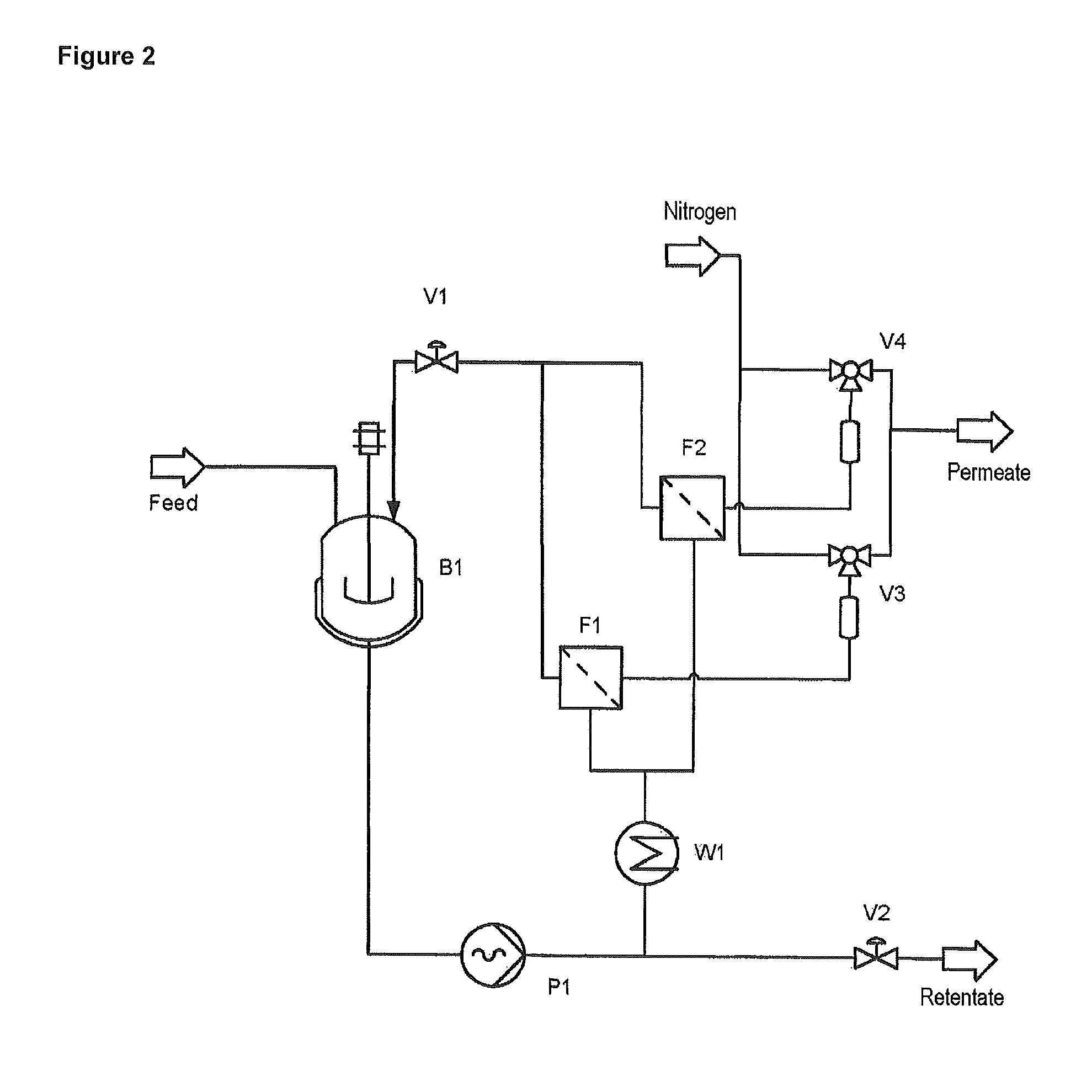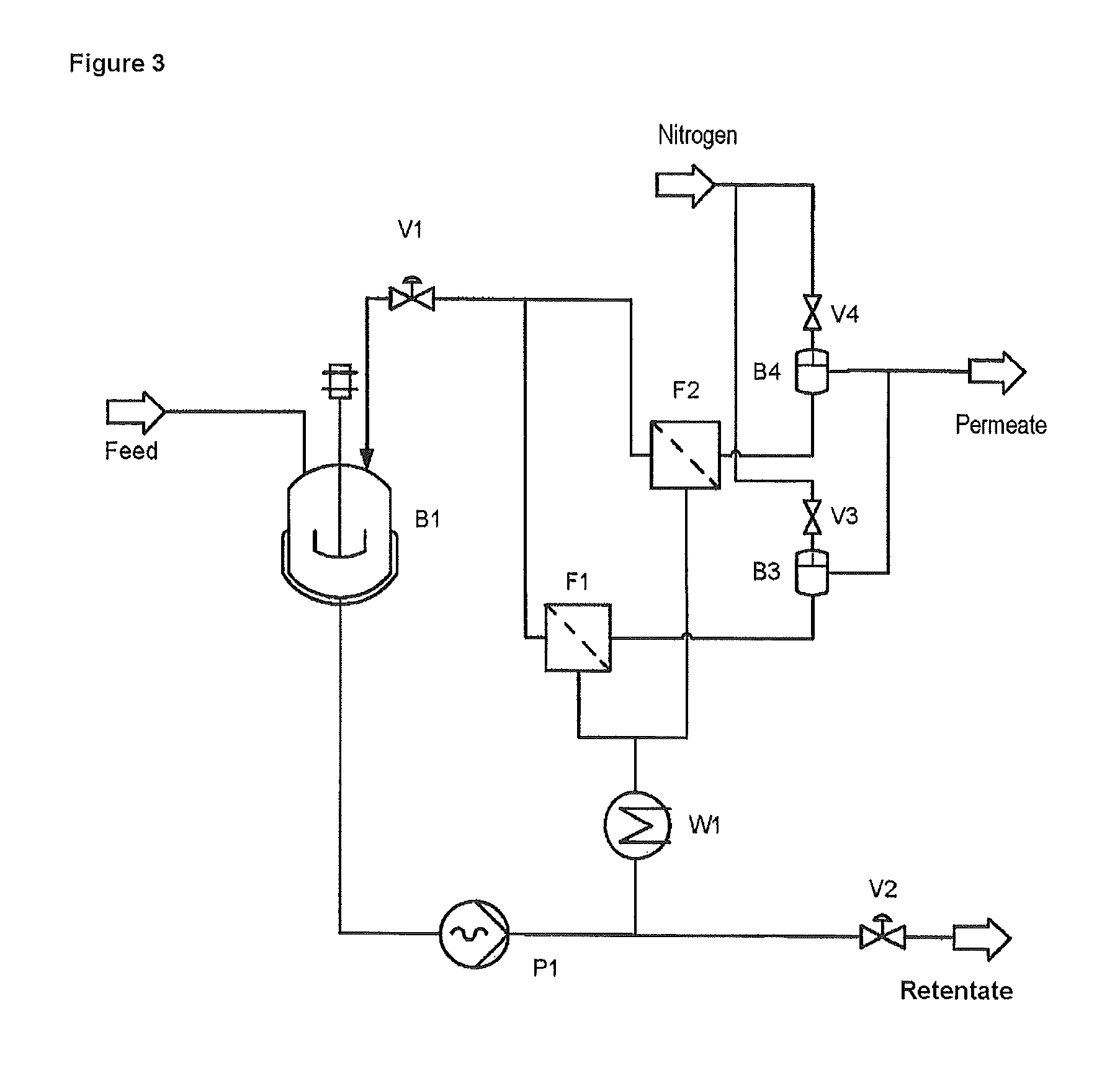Process for the preparation of homopolysaccharides
a technology of homopolysaccharides and process steps, applied in biochemistry apparatuses, biochemistry apparatus and processes, membrane technology, etc., can solve the problems of high cost of stainless steel membranes, complex process, and insufficient quality, and achieve low a content, high specific viscosity, and quality sufficient
- Summary
- Abstract
- Description
- Claims
- Application Information
AI Technical Summary
Benefits of technology
Problems solved by technology
Method used
Image
Examples
##ventive example 1
Inventive Example 1
Filtration Using an Asymmetrical Filter Membrane
[0106]Once again, the crossflow filtration apparatus described in Example 1 was used. The filter modules F1 and F2 were back-washed with permeate by means of the three-way valves V3 and V4 at intervals of 120 s in each case with in each case 200 ml of permeate and the pressure of the nitrogen was 4 bar. The content of the crossflow filtration plant was cooled to 22° C. by the double jacket of the container B1 and the heat exchanger W1.
[0107]An asymmetrical tubular membrane comprising SIC was used in the filter modules F1 and F2, i.e. a 37-channel element (model “CRYSTAR, Type FT 3000” from St. Gobain). The pore size D90 of the membranes was 3.0 μm. The pore size D90 of the support material was 30 μm. The length of the membrane tube was 1 m and the external diameter was 32 mm. The membrane area of a module element was 0.42 m2. The hydraulic diameter of a channel was 3.4 mm.
[0108]The fermentation discharge described in...
##ventive example 2
Inventive Example 2
Filtration Using an Asymmetrical Filter Membrane
[0116]Once again, the crossflow filtration apparatus described in Example 1 was used.
[0117]However, the apparatus was equipped for permeate back-washing with two “BACKPULSE DECOLMATEUR BF 100” piston systems (see FIG. 3, positions B3 and B4). The filter modules F1 and F2 were back-washed with permeate by means of the ball valves V3 and V4 at intervals of 900 s in each case with in each case 100 ml of permeate, and the pressure of the nitrogen was 10 bar.
[0118]The double jacket surrounding the container B1 and the heat exchanger W1 were used to temperature-control the content of the crossflow filtration unit to 29° C. to 30° C.
[0119]An asymmetrical tubular membrane comprising alumina was used in the filter modules F1 and F2, i.e. a 19-channel element (model “MEMBRALOX, Type EP 1940” from Pall). The pore size D90 of the membranes was 5.0 μm. The pore size D90 of the support material was 12 μm. The length of the membran...
PUM
| Property | Measurement | Unit |
|---|---|---|
| pore size | aaaaa | aaaaa |
| pore size | aaaaa | aaaaa |
| pore size | aaaaa | aaaaa |
Abstract
Description
Claims
Application Information
 Login to View More
Login to View More - R&D
- Intellectual Property
- Life Sciences
- Materials
- Tech Scout
- Unparalleled Data Quality
- Higher Quality Content
- 60% Fewer Hallucinations
Browse by: Latest US Patents, China's latest patents, Technical Efficacy Thesaurus, Application Domain, Technology Topic, Popular Technical Reports.
© 2025 PatSnap. All rights reserved.Legal|Privacy policy|Modern Slavery Act Transparency Statement|Sitemap|About US| Contact US: help@patsnap.com



